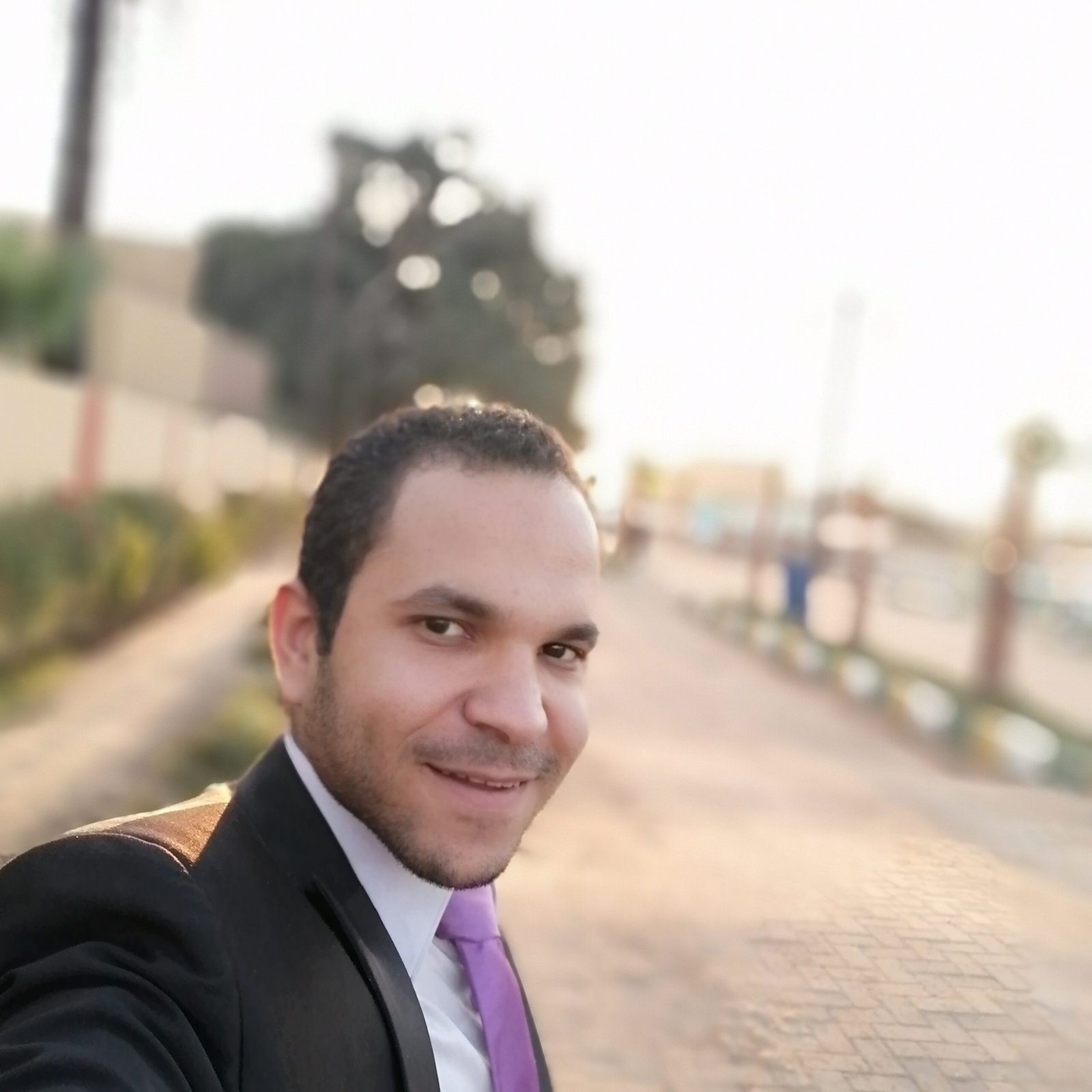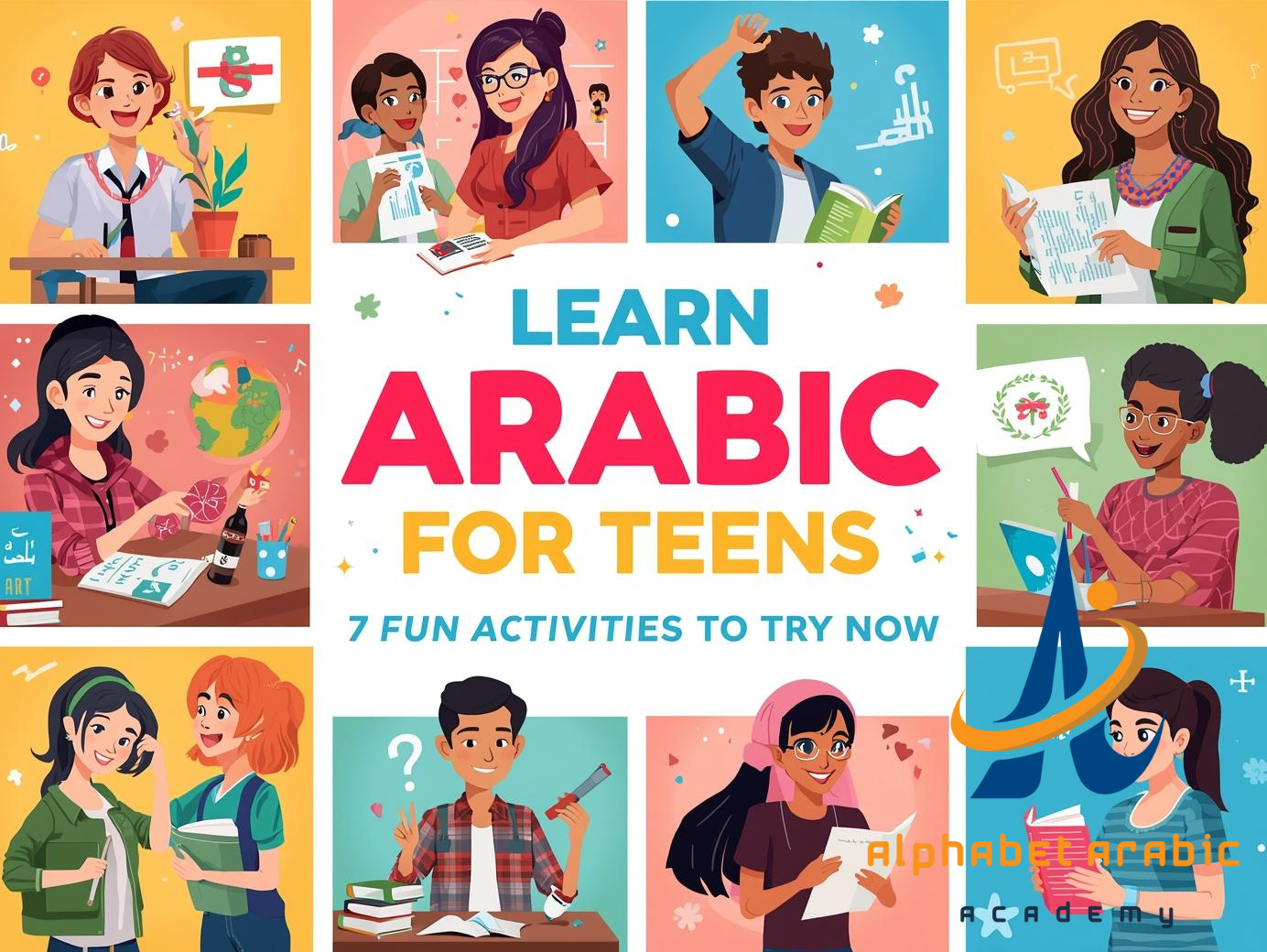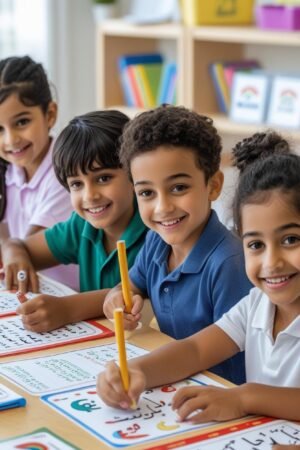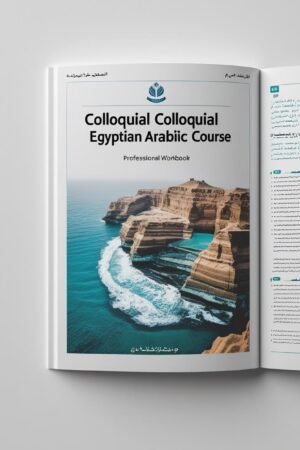Learn Arabic for teens has never been easier than it is now. We offer you full commitment to deadlines, successful learning, and the wonderful results that you will get with us. Select from various plans and prices. Just contact us and you will find what pleases you.

Introduction to Learning Arabic
Learning Arabic can be an exciting adventure for teenagers! Whether beginning or enhancing skills, ensuring enjoyment in the learning process is crucial. With interactive lessons, engaging activities, and a supportive learning environment, mastering Arabic becomes both fun and effective. If you’re searching for a Home Quran Teacher Near Me, we offer private lessons and online Arabic courses tailored to different learning levels. contact us
Benefits of Arabic for Teens
Why should teenagers learn Arabic? Besides being one of the most spoken languages worldwide, it opens doors to cultural understanding, career opportunities, and travel. Learning Arabic also strengthens cognitive skills, improves memory, and enhances problem-solving abilities. Plus, it connects students to a rich literary and historical heritage, making it an invaluable language to explore.
Interactive Arabic Apps
Teenagers love technology, so why not use it to learn Arabic? Several interactive applications make learning Arabic easy and engaging. Apps like ArabicPod101 provide structured lessons, games, and real-life conversations to improve vocabulary, grammar, and pronunciation. With immersive learning experiences, teenagers can practice Arabic anytime, anywhere.
Arabic Music to Develop Language Skills
Listening to Arabic songs is a fun way to enhance language skills. Music helps improve pronunciation, expands vocabulary, and introduces learners to different Arabic dialects. Whether it’s classic Arabic songs or modern pop hits, singing along reinforces understanding and boosts confidence in speaking.
Arabic Story Reading Sessions
Reading Arabic books and stories is an excellent way for teenagers to develop reading comprehension. Many online platforms offer free Arabic PDFs, audiobooks, and printable worksheets to practice reading Arabic at home. Whether your teen is a beginner or at an advanced level, story sessions make learning more immersive and enjoyable.
Cultural Arabic Cooking Lessons
Combining language learning with cultural experiences makes learning more exciting! Hosting an Arabic cooking session teaches teenagers new Arabic words, phrases, and traditions. Learning how to prepare dishes like falafel, hummus, or kabsa while practicing Arabic vocabulary adds a delicious twist to the learning journey.
Arabic Movie Nights
Watching Arabic movies with subtitles is an entertaining way to learn the language. It helps learners recognize phrases, accents, and everyday conversations. Popular streaming platforms offer a variety of Arabic films, from classic Arabic cinema to modern series. This method enhances listening skills and introduces students to different cultures and traditions.
Arabic Language Clubs for Teens
Joining an Arabic language club provides a great opportunity for teenagers to practice with peers. Many institutes and online platforms organize language clubs where students engage in interactive activities, discussions, and games. These clubs help boost confidence in speaking and create a fun, supportive learning environment.
Participation in Arabic Calligraphy
Arabic calligraphy is a beautiful art form that allows teenagers to explore the artistic side of the language. Practicing Arabic writing improves letter recognition, grammar, and cultural appreciation. Many online courses offer calligraphy lessons, allowing learners to master the Arabic alphabet while developing a creative skill.
Arabic Language Garden Games
Outdoor games make language learning more exciting! Teens can participate in activities like word hunts, alphabet races, and storytelling challenges in Arabic. These interactive activities improve vocabulary, listening, and speaking skills in an engaging way.
Learn Arabic with Pen Friends
Connecting with Arabic-speaking pen friends is a great way to practice writing and speaking Arabic. Exchanging letters, emails, or messages with native speakers enhances understanding of sentence structures, vocabulary, and cultural nuances. Many online resources offer safe platforms to find language exchange partners.
Host an Arabic Weekend
Planning a weekend full of Arabic activities is a great way to immerse teens in the language. Activities can include cooking sessions, movie nights, music listening, and even a Quran reading session. This full experience strengthens Arabic skills in a natural and enjoyable way.
Conclusion: Fun Ways to Learn Arabic
Learning Arabic doesn’t have to be difficult—it can be an adventure! By incorporating these fun activities, teenagers can build confidence, enhance their skills, and fall in love with the language. Whether it’s through apps, music, movies, or interactive lessons, every step brings them closer to mastering Arabic.
Start Your Arabic Learning Journey Today!
Looking for the best online Arabic courses at affordable prices? Alphabet Arabic Academy offers comprehensive programs, expert tutors, and engaging materials for all levels—from beginners to advanced learners. Subscribe today and take the first step towards fluency!
🔹 Visit us at Alphabet Arabic Academy
🔹 Follow us on social media for updates!

About The Author
Mr. Abdelrahman is a dedicated Arabic language instructor and founder of Alphabet Arabic Academy — an online platform that helps non-native speakers master Arabic from beginner to advanced levels. With years of experience teaching Modern Standard Arabic, Quranic Arabic, and conversational Arabic, he has guided hundreds of students worldwide toward fluency through personalized online lessons and innovative learning programs. His mission is to make Arabic learning accessible, engaging, and truly life-changing for learners of all ages.





